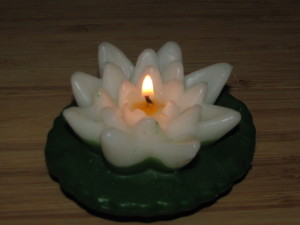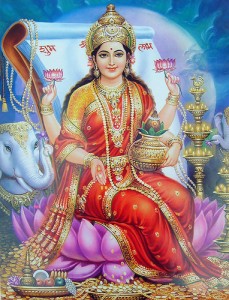One of the biggest holidays in the Vedic calendar is the festival of Diwali (dee-vaah-lee) or Deepavali (deep-uh-vaah-lee) – the Indian festival of lights. “Deepa” means light and “avali” means a continuous line. Diwali occurs the day before the Indian New Year. This year, Diwali will be celebrated on different days in various parts of the world, due to the phase of the Moon utilized to calculate the holidays in Vedic astr ology. According to mypanchang.com, Diwali 2013 falls on November 2 in North America, Europe, and the West Indies. However, India, Australia, New Zealand, and Malaysia will celebrate Diwali on November 3.
ology. According to mypanchang.com, Diwali 2013 falls on November 2 in North America, Europe, and the West Indies. However, India, Australia, New Zealand, and Malaysia will celebrate Diwali on November 3.
Diwali celebrates the return of Lord Rama back home after a 14 year period of exile. The residents of Ayodhya (I-yo-the-yah) celebrated his homecoming by lighting rows and rows of lights, or diyas and waving sparklers. Rama symbolizes the path of righteousness or dharma. His return is a metaphor for the victory of good over evil.
Indians celebrate Diwali by wearing colorful, new clothes and honoring the goddess Lakshmi (luck-shmee), the goddess of prosperity, fortune, and beauty. Their homes are brightly lit with clay diyas (candles). Some also regard Diwali as the day in which Lakshmi and Vishnu were married. Homes are cleaned from top to bottom so that Lakshmi can grace the home with her presence. Pujas (ritual worship) to Lakshmi is traditionally performed on Diwali.
Traditionally, Indians celebrate new year’s by going to their local temple first thing in the morning, starting off the year on a reverential note and receiving blessings for the coming year. The first money spent that year is an offering to a temple or some charity, to begin the year with an act of giving. Women cook and share sweets with friends and family. Sweets stand for the sweetness in life, which we all savor. Sukhadi (soo-khuh-dee)- a sweet made from butter, jaggery and wheat flour is usually cooked and offered for the New Year.
On the first day of the Indian new year, the first three items purchased in the new year in a traditional Indian household are moong dahl, yogurt, salt, and flowers.
 Diwali is typically a five day festival. It begins on the 13th phase of the waning Moon in the Vedic month of Ashvina and ends on the second phase of the waxing Moon in the month of Kartika. The first day is known as Dhanteras and Lakshmi puja is performed. The word “dhana” means wealth, which is also connoted with the goddess Lakshmi. “Tera” means 13th, the phase of the Moon on Dhanteras. Vedic astrology is a system which utilizes the lunar calendar. Another association of Dhanteras is with Dhanvantari, the physician of the Gods. Dhanvantari holds the amrita, or the nectar of immortality. He is the patron deity of Ayurveda. Dhanteras falls on October 31 in North America and the West Indies. It is on November 1 for the rest of the world, according to mypanchang.com. The day after Dhanteras is Kali Chaudas, honoring Kali, the powerful dark (one meaning of Kala is “black”) goddess who is an avatar of Goddess Durga. In Indian mythology, Kali was a slayer of demons.
Diwali is typically a five day festival. It begins on the 13th phase of the waning Moon in the Vedic month of Ashvina and ends on the second phase of the waxing Moon in the month of Kartika. The first day is known as Dhanteras and Lakshmi puja is performed. The word “dhana” means wealth, which is also connoted with the goddess Lakshmi. “Tera” means 13th, the phase of the Moon on Dhanteras. Vedic astrology is a system which utilizes the lunar calendar. Another association of Dhanteras is with Dhanvantari, the physician of the Gods. Dhanvantari holds the amrita, or the nectar of immortality. He is the patron deity of Ayurveda. Dhanteras falls on October 31 in North America and the West Indies. It is on November 1 for the rest of the world, according to mypanchang.com. The day after Dhanteras is Kali Chaudas, honoring Kali, the powerful dark (one meaning of Kala is “black”) goddess who is an avatar of Goddess Durga. In Indian mythology, Kali was a slayer of demons.
Diwali marks the celebration of light over darkness, as Rama was victorious in defeating the demon Ravana prior to his return to Ayodhya. It is also a time when we can honor our own inner light and let it shine forth into the world.
Happy Diwali 2013!